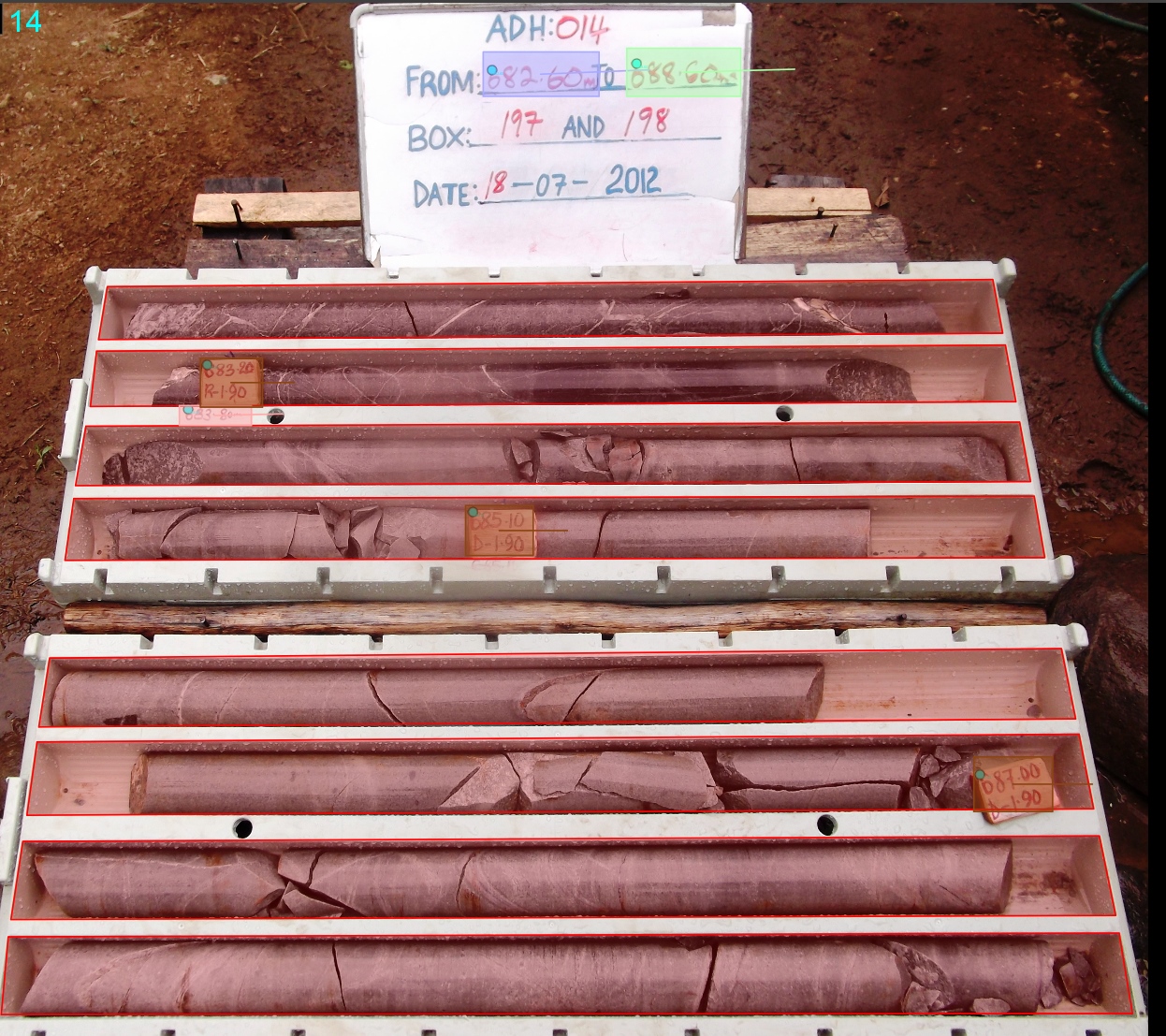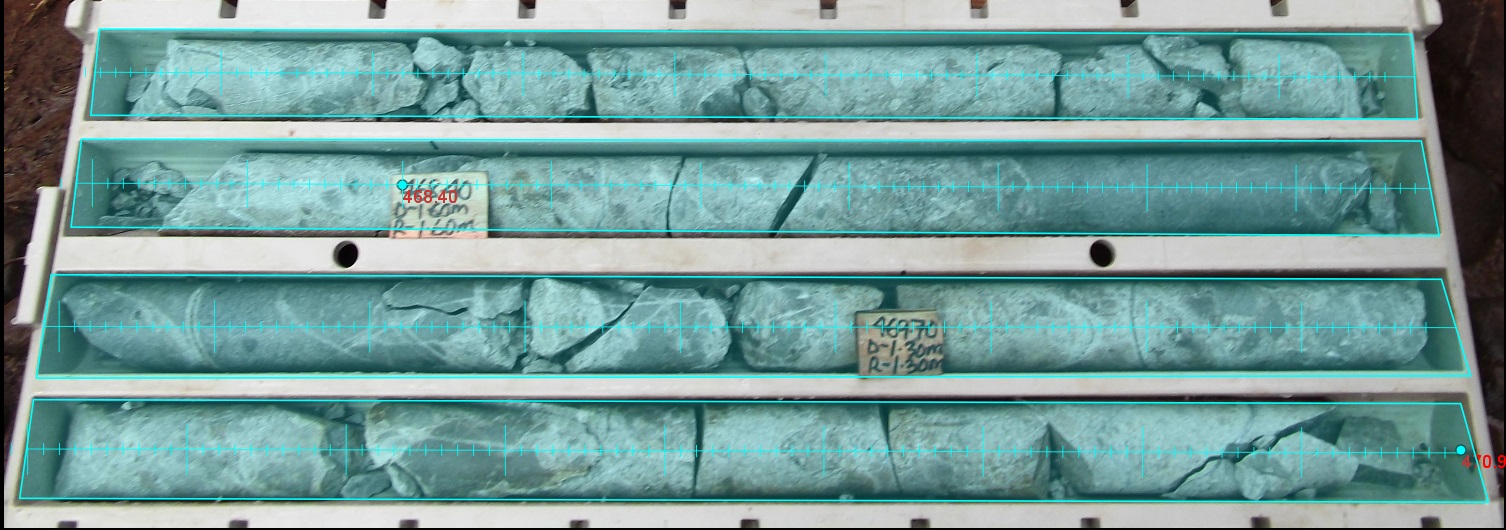Core Tray Analysis
The Problem
Mining companies invest heavily in exploration drilling. The resulting drilhole cores are photographed and sent to a lab for assaying. These photographs are then often ignored, in favour of the assays, for mine planning because the information contained in them is difficult to quantify and incorporate into the ore body knowledge.
The first step in making the image information usable is to directly register the image information to the assay data. This requires assigning a depth value to each part of the core in the image. This process can be complicated because this registration information can be free-form text written on parts of the image never intended to be read by a computer.
The Data
The core data were provided by Newcrest as part of the “Get 2 the Core” challenge and consisted of hundreds of images and associated depth measurements.
The Solution
Cyency created additional annotated images showing the position and direction of the text in the images, as well as the provided outlines of the core tray rows.

A neural net was then trained to predict these annotated boxes and orientations. From these boxes, text sub-images were extracted and a second neural net was used to recognise digits in these images.

|

|

|
Some text is machine written or clear, but some text contains vertical bars, arrows, or additional text that introduces the number, which makes detection difficult. The decimal points also prove tricky to detect correctly.
However, this problem is made a little easier by the proximity of the values and the fact that consecutive numbers should be within a metre or two of each other. This helps disambiguate between cases where the decimal point was not obvious, where a detection of “2120” followed by “2130” is more likely to be “212.0” followed by “213.0”. Additional meta-data may be extracted from the filename or a database, and this can also be used to refine the predictions.
The Results
A system capable of accurately segmenting core images and assigning depth based on text information visible in the images was developed.

The Bottom Line
Creating aligned, segmented images is the first step in incorporating core image information into ore body knowledge. Further steps might use this information to improve the lithographic or mineralization classifications or to aid in identifying corresponding geological features between drillholes.
If you have drillhole imagery you would like to include with your resource estimations, please contact Cyency , we would love to hear!
